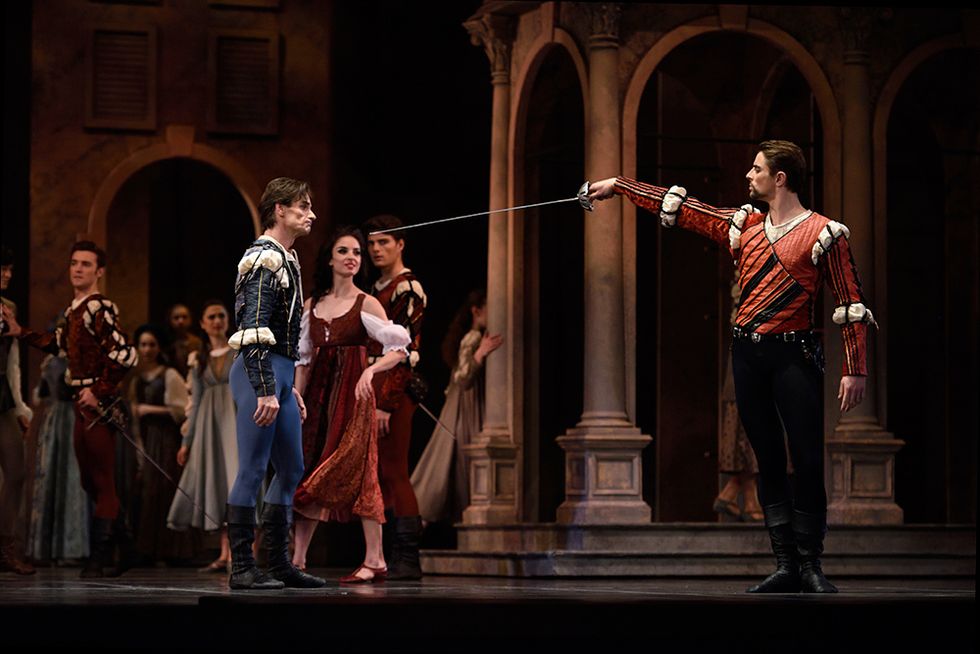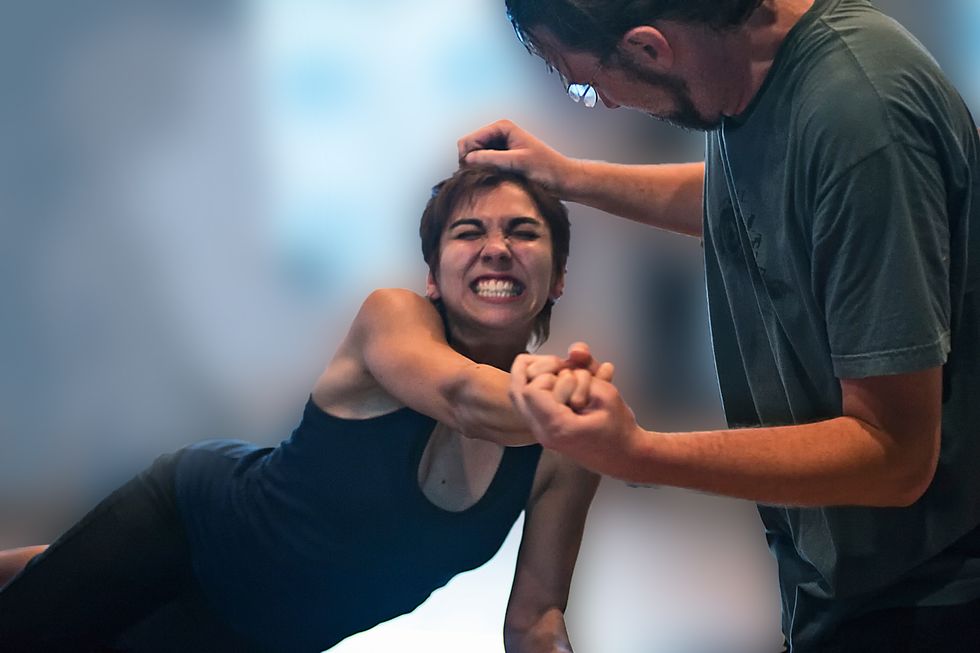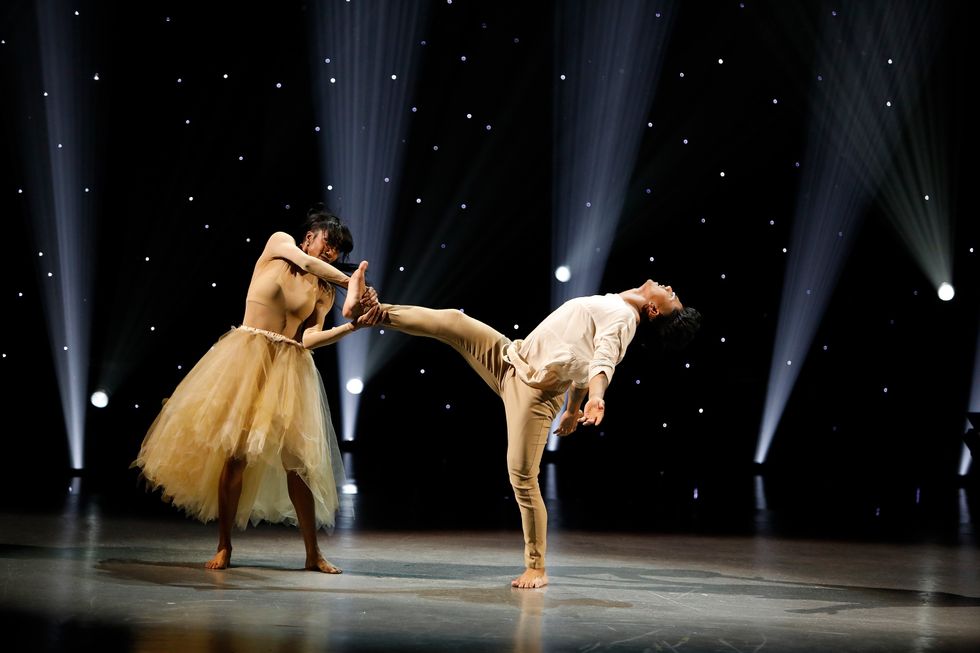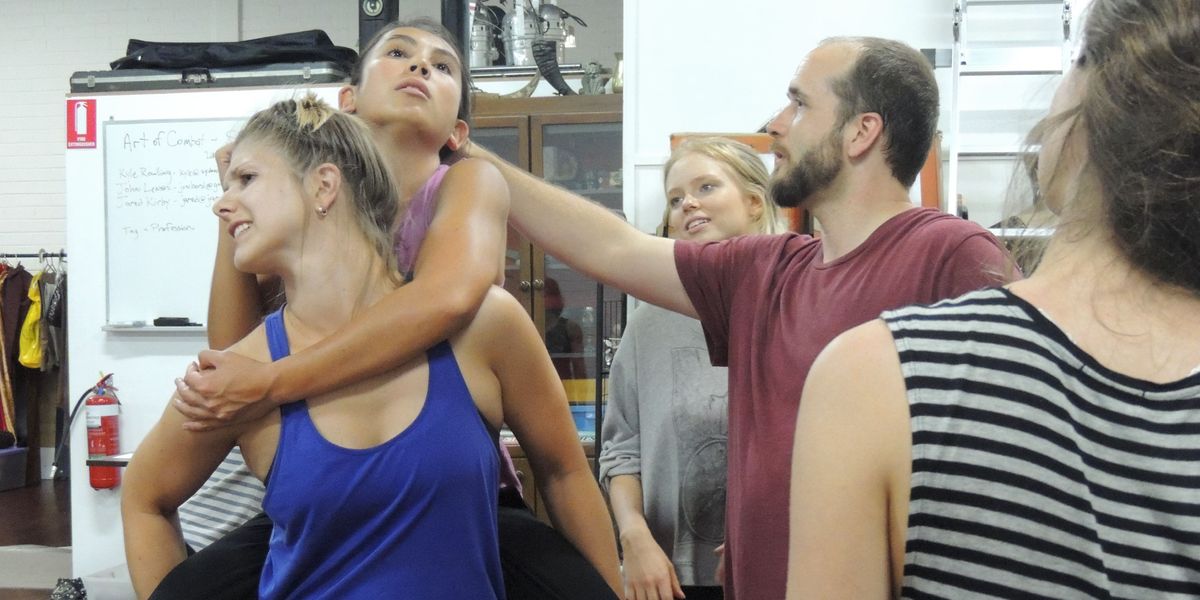The 5 Things You Should Do to Make Stage Combat Look Real
You dance like a knockout—but can you take a punch? Intense stage combat is a crucial element in many shows, from the sword fighting in Romeo & Juliet to the left hooks of the Broadway musical Rocky. But performing it well requires careful body awareness, trust and a full commitment to safety. Whether you’re dancing a pivotal battle in a story ballet or intense partnering in a contemporary piece, these expert tips can help you make your fight scenes convincing, compelling and safe.
1. Master the Basics
When Luke Ingham was cast as Tybalt in San Francisco Ballet’s Romeo & Juliet, he spent a full month practicing the basic body positions, footwork and momentum of fencing. “You need to be really grounded, you need to know where your feet are,” Ingham says.

PC Erik Tomasson, Courtesy SFB
Only when he had the fundamentals down did he start learning the Act II sword-fight choreography. “Because of how long we spent perfecting everything, and how confident we became with the choreography, it allowed us to freely express our characters without being concerned about ‘What am I doing now?’ ” says Ingham.
2. Get Up Close and Personal
Body combat, like the pushing, shoving, hair-pulling stepsisters in Cinderella, is safer and more believable when dancers are within half an arm’s length of each other, rather than with arms straight and elbows locked out.
“You need to be as close to your partner as possible, so that you’re able to nonverbally communicate what you need,” explains Jared Kirby, a New York–based fight coordinator who has trained TV stunt people and Shakespearean actors, and recently helped choreographers Rick and Jeff Kuperman prepare for their production of The Count of Monte Cristo. “Then the victim’s always in control. And the audience gets this amazing, visceral experience because the closer you are, the more realistic it looks,” he says.

PC Absolutely Perilous
3. Know Your Target
Ingham spent hours rehearsing with former SFB principal Pascal Molat, who portrayed his opponent, Mercutio. “It’s important to keep that continuity with the same partner,” he says, so you can master the timing, momentum and position of every move. “Some people are short, some people are taller, and you need to have an accurate understanding of what point on the body you’re aiming for.” Stage-ready swords and knives are blunted and dulled, but they’re not harmless, and accidentally getting hit “wasn’t pleasant.”
4. Fight Cooperatively
Even when characters are sworn enemies, the dancers portraying them need to be harmonious partners. “Fight work is 100 percent cooperative energy to show conflict,” says Kirby. Remember that your most important job is protecting each other. “If you both embrace that, you’ll work together to move the choreography to the next level,” he says.
Comfort Fedoke and Mark Villaver, for example, were great partners but had not done a single lift together before they performed Talia Favia’s physically and emotionally intense duet “Ending” last season on “So You Think You Can Dance.” “She had never had to trust him in that way,” says the contemporary choreographer. Favia encouraged them to talk about any fears, and to work out timing and transitions that felt best on their bodies. Confidence in your partnership “comes over time and practice, and being a good listener,” she says.

Photo courtesy SYTYCD
5. Speak Up
If a choreographer or fight director asks you to do something that feels unsafe, say something. “It’s a very unfortunate position, but it happens,” says Favia, who never asks dancers to attempt dangerous tricks just for effect. “If it’s choreographed correctly, the message will always be portrayed, even in a ‘safe’ version,” she says.
If you can’t resolve the situation in rehearsal, go to the director, studio owner or your union rep. “You have to trust your instincts and express yourself,” Kirby says. “Respectful communication is key.”





